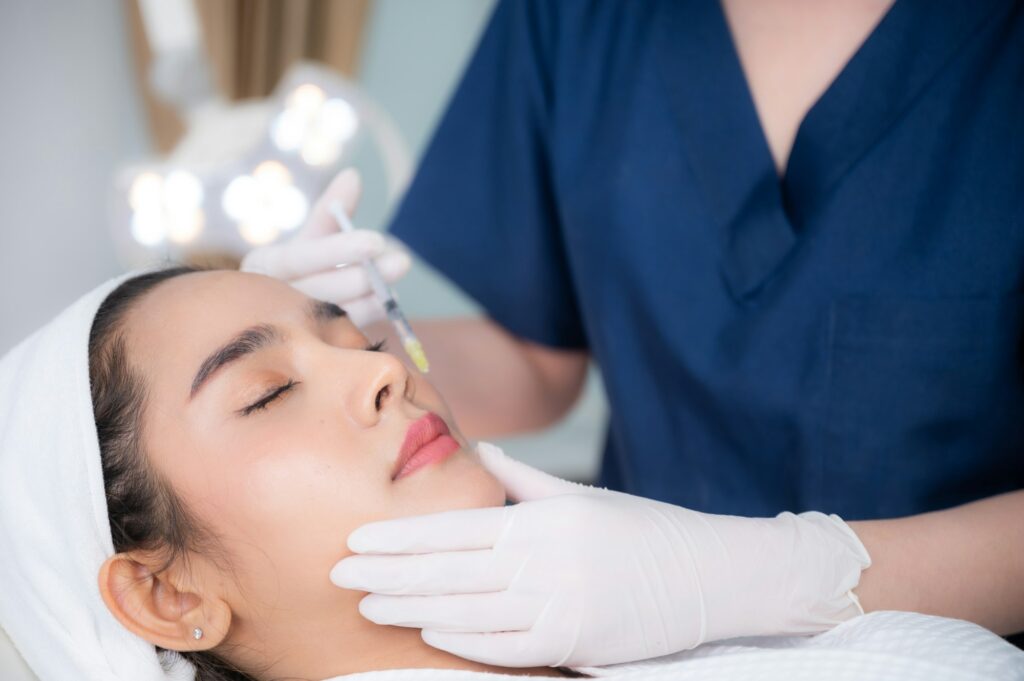Basal Cell Carcinoma
Basal cell carcinoma (BCC) is the most common type of skin cancer. It’s important to catch it early for the easiest and most effective treatment. Here’s what you need to know:
Here’s a breakdown of what Basal Cell Carcinoma is and some common treatment options:
What is Basal Cell Carcinoma?
BCC develops in the basal cells, which are the foundation of the outer layer of your skin. Sun exposure is the main culprit, and it typically affects areas that get the most sun, like the head, neck, and chest.
Signs and Symptoms:
BCC can appear in several forms, but some common warning signs include:
Bump or nodule: This can be pearly or clear, pink, red, white, or brown/black in darker skin tones. It might be shiny and smooth or scaly.
Open sore: This sore may crust, ooze, or bleed, and it might heal and then reappear.
Red patch: This can be scaly, itchy, or show no discomfort.
Scar-like area: This may be flat, white, yellow, or waxy looking, with a shiny and taut surface.
Risk Factors:
Sun exposure: Excessive sun exposure throughout your life is the main risk factor.
Fair skin: People with fair skin and those who burn easily are at higher risk.
History of sunburn: Having multiple sunburns, especially severe ones, increases your risk.
Weakened immune system: Organ transplant recipients and people with certain medical conditions are more susceptible.
Age: BCC becomes more common with age.
Family history: Having a close relative with BCC increases your risk.
Importance of Early Detection:
BCC is generally slow-growing and very treatable when caught early. Early detection allows for easier removal with minimal scarring. If left untreated, however, BCC can grow into nearby tissues and become more difficult to remove.
Screening and Diagnosis:
Dermatology providers can usually diagnose BCC through a skin exam. In some cases, a device called a dermatoscope might be used for a closer look. If there’s any concern, a biopsy (taking a small tissue sample) will be done to confirm the diagnosis.
Treatment:
There are several effective treatments for BCC, depending on the size, location, and other factors. Common options include:
Surgery: This is the most common treatment, where the BCC is removed.
Mohs surgery: This specialized technique removes the cancer tissue in stages, ensuring complete removal while minimizing healthy tissue removal.
Cryotherapy: Freezing the BCC with liquid nitrogen.
Curettage and electrocautery: Scraping the BCC followed by applying electric current to destroy cancer cells.
Radiation therapy: Using high-energy rays to kill cancer cells
Prevention:
The best way to prevent BCC is to limit sun exposure. Here are some sun safety tips:
Seek shade: Especially during peak sun hours (10 am to 4 pm).
Wear sun-protective clothing: Cover up with long sleeves, pants, and a wide-brimmed hat.
Sunscreen: Apply broad-spectrum SPF 30+ sunscreen generously and reapply every two hours, or more often if sweating or swimming.
Sunglasses: Protect your eyes from UV rays with sunglasses that block UVA and UVB rays.
By following these sun safety practices and getting regular skin cancer screenings, you can significantly reduce your risk of BCC. If you notice any suspicious changes on your skin, consult a dermatology provider for a checkup.
Mari
I have been a patient of Tirsa’s for about 16 yrs now and she has always gone above and beyond with any service she has provided. She is professional, kind, clean, and a master at her craft. Wherever she goes, I will follow for my dermatology/cosmetic needs. She is also stunning inside and out. Ladies and gents, make an appt!
Neomia
Local Guide
Tirsa is a MASTER of fillers!!! Kindest bed side manner and is also a rare find since she is also a talented, educated dermatologist who can diagnose and treat several conditions. She has treated myself and and daughter!
Brenda
I found Tirsa over four years ago and I’m so thankful I did. Her warm and sincere personality, along with her knowledge and experience will definitely put you at ease the very first time you meet her. She listens to your concerns and explains the various options. She does not overdo any of the procedures. She doesn’t try to sell products or services that you don’t need. She is a natural at what she does. Thank you, Tirsa, for taking great care of me always, I would never consider going anywhere else!
K.G.A. Vassall
Local Guide
Tirsa Quartullo is a great Nurse Practitioner for Dermatology. She was able to make me feel comfortable even though I was there for an embarrassing skin condition. Tirsa’s years of expertise allowed her to quickly diagnose the issue and prepare a plan of treatment that was not only effective but affordable and easy to maintain.
It is quite freeing to know that an unpleasant time in my life will be over soon.
Thank you Tirsa!
Michelle
Tirsa Quartullo is the only one I trust because she does a beautiful job naturally. She pays close attention to detail and always does high-quality work. Every time I see her, I am impressed by how she creates amazing, natural-looking results. Her skill and professionalism make her the best choice for anyone wanting great work.
Tiffany
PHP Dermatology is wonderful! Tirsa is an Amazing provider! She is so knowledgeable and kind. Her talent, skill and expertise in Dermatology is evident as she talks with you and makes recommendations. Whether medical or cosmetic, she takes the time with you to make sure you feel heard, well cared for and beautiful!

Elevate Your Dermatological Experience with Our Expert Care
PHP Dermatology provides an array of resources for visitors who are seeking to enhance and improve their skin health.
